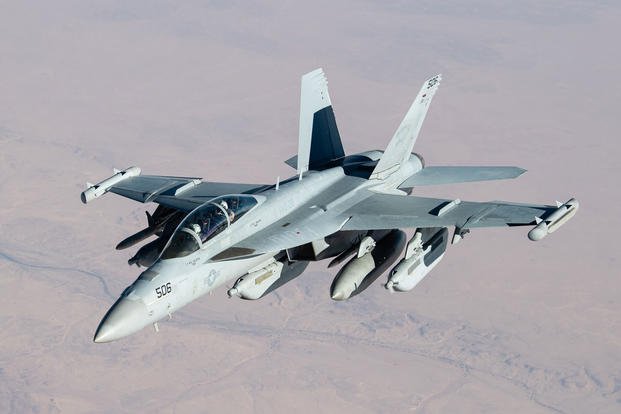For the first time in nearly a century, the U.S. Navy and Marine Corps went an entire year without a single aviation accident-related fatality.
The Naval Safety Center announced Tuesday that neither service recorded an aviation-related death in fiscal 2020, according to a news release.
Read Next: The Air Force Plans to Retrain Weapons System Officers to Be B-21 Bomber Pilots
"After 98 years of recorded aviation history, this unprecedented milestone serves as testimony to the Naval Aviation Enterprise's tireless commitment toward fostering a safety culture of excellence," said Rear Adm. F.R. "Lucky" Luchtman, Naval Safety Center commander.
The Navy did not begin active record-keeping of such accidents and fatalities until 1922, though naval aviation began in 1910. But the safety center believes this "may be the first time ever" the services have achieved this milestone.
"It's a remarkable achievement that's really the result of years of training, proficiency and adopting a good safety culture," added Capt. Scott Kramarik, the Naval Safety Center's director of aviation safety programs. "Without that, there's no way we could've gotten here."
While both services did suffer air accidents during the year, no one died.
The Department of the Navy saw a 10% reduction in flight hours amid the novel coronavirus pandemic, the safety center said. While that reduction could have contributed to fewer accidents, both services still maintained a relatively high operations tempo, the release states.
For example, members of 3rd Marine Aircraft Wing pressed on with "Exercise Summer Fury 20," which simulated an "island-hopping" campaign using heavy-lift helicopter and tilt-rotor units, along with F-35B and F-35C Lightning IIs, F/A-18 Hornets and AV-8B Harrier attack jets.
Kramarik credited the achievement to additional resources, data and safety tips made available to operational aviation units.
"We're really trying to help share the lessons learned and best practices that we've seen throughout the fleet with the other squadrons," he said in the release. "I think that slowly, over time, our approach has also influenced the culture of safety in the squadrons."
The result was a dramatic decrease from 2018, which saw a six-year high of 39 aviation-related fatalities across all the services, according to data from Military Times and Task & Purpose.
In addition to enhanced safety measures, the Navy has worked for the last few years to improve its aviation centers and depot supply chain to increase fleet readiness.
In 2018, then-Defense Secretary Jim Mattis issued a mandate requiring the Navy and Air Force to achieve a minimum level of 80% readiness for the F-16 Fighting Falcon, F-22 Raptor, F-35 Joint Strike Fighter and F/A-18 Hornet fleets by the end of fiscal 2019. The Navy weeks earlier had begun additional sustainment efforts to increase its mission capable (MC) rates -- or the ability to fly at a moment's notice -- to keep its older fleets viable.
Nearly a year later, the Navy said it hit Mattis' benchmark.
In September 2019, the service said it had even exceeded the goal, with "343 primary mission aircraft inventory (PMAI) F-18 jets and 95 PMAI EA-18G Growler aircraft ready to deploy for their missions," according to a release. The Navy said it included the Growler in its sustainment work because of its similarity to the Hornet.
After nearly a decade of "regularly maintaining between 250-260 [mission-capable] F/A-18s, the Navy is now sustaining over 320 MC Super Hornets and surged to attain service goals of 341 MC Super Hornet and 93 MC Growler aircraft this month," the 2019 release said.
-- Oriana Pawlyk can be reached at oriana.pawlyk@military.com. Follow her on Twitter at @oriana0214.
Related: Navy Pilot Ejects Safely Before Super Hornet Crashes Near China Lake













